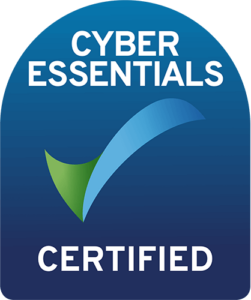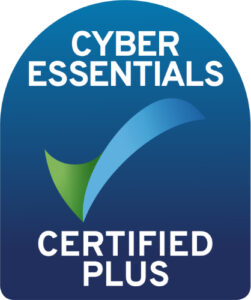Thinc insights
Many SMEs still rely on physical servers for hosting, but could they be better off with cloud or SaaS?
Whether it’s emails, storage or streaming, our day-to-day lives rely on cloud-based services. But in the world of business, this is often a different story. While the cloud is gaining popularity, the shift hasn’t been as wholesale as it has been outside of work. Many SMEs are still relying on physical servers to run some or all of the software they need to work. In a time where so much is available through the cloud, or even through both your web browser and your own network, this may seem like an odd choice. But there are lots of differences between these setups and benefits to each way of working. In this article, we’ll break down these differences and help you decide what will be the best fit for your business.
Both ways of working have their pros and cons, but to figure out what’s best for you, it’s important to understand the types of infrastructure they’re built on.
Traditionally, organisations have managed their data and applications by hosting everything on their own servers. This approach means that all services and applications run from a server (or multiple servers) located within the physical premises of the business.
Even today, some businesses prefer this method due to the assurance it provides. For instance, businesses with stringent data security requirements or those that have no compelling reason to change what’s already working well might stick with on-premises solutions. There are benefits to this approach as it gives the user ultimate control over their data and consumptions as they can only use the server space they have.
Cloud computing means that your infrastructure is hosted offsite, typically by a third-party provider like Microsoft Azure (public cloud) or through a private cloud service (such as Thinc). These cloud-based models allow businesses to run services without needing their own physical server. There’s also the option of a hybrid cloud, which combines both public and private clouds.
There are a lot of benefits for businesses who have their systems in the cloud. Cloud providers typically offer high levels of data security. The provider usually handles any software updates, which reduces the amount of manual intervention you’ve got to do and means your systems are always up to date. Also, if everything in your business is connected through one cloud system, it’s easier to join up data across multiple sites.
The number one reason that many businesses choose to move to the cloud, however, is simply the cost. The price of running and maintaining on-premises systems can quickly get overwhelming but, when you’re on the cloud, you don’t need to worry about any of the hardware costs and typically you only end up paying for what you need thanks to flexible tariffs.
While cloud computing offers plenty of advantages, it also has some drawbacks. Some businesses feel uneasy about having their data managed offsite, fearing a loss of control. Also, if you’re not staying on top of monitoring it, cloud usage can lead to high costs due to pay-per-use models.
If you’re reading those two descriptions and thinking some parts of cloud sound good and some parts of on-premises sound good too, there is another option – a hybrid setup. This gives you a sort of ‘best of both worlds’ situation where your more sensitive data that you need complete control over is stored locally in your on-premises servers, while using the cloud for less critical applications.
Some businesses also use something called a multi-cloud approach, where they use two or more different cloud providers, in either public, private or both, to give them the extra flexibility and control that they might not get from just one setup.
Lots of software packages are available as both on-premises or cloud versions. These may seem like similar offerings so it can be hard to decide what’s the best fit for your business.
Most of the leading solutions for business work started as on-premises systems. This is true in the world of enterprise resource planning (ERP), where companies like SAP and Sage started out making solely on-premises software but now offer most of their products on the cloud as well, evolving as customer demand has changed.
For example, SAP Business One is available on-premises or in the cloud. Sage 200 Professional is available as on-premises, or can be run on either a remote server or in the cloud, connected by a wide area network.
Best-in-class on-premises systems such as these allow integration with fantastic third-party tools to expand their capability, much as you’d expect with cloud-based solutions.
On-premises tools need manual updates and maintenance, which can be time-consuming and complicated, but it also gives you extra customisability and control, which can be useful if you’ve got very specific needs for your software.
Another development for systems that have typically been available via desktop is the arrival of a ‘web client’ – many software providers have developed or are developing ways to access a version of their software that your teams can access via their browser – ideal for those working remotely or on the move.
A subset of cloud computing is software as a service (SaaS), which is when applications are hosted on the cloud and accessed via the internet. These are subscription-based services where your software is hosted and managed by the provider, so you don’t need to install it on your own devices.
Examples of SaaS business tools include HubSpot, a marketing, sales, and service software; Salesforce, a customer relationship management (CRM) platform; Dropbox, a file storage and sharing service; and Sage Intacct and Sage 200 Standard, which are cloud-based accounting solutions.
There are a wide range of SaaS tools available, which is both good and bad news: while there are plenty of great options out there, there are also many others of more questionable quality and security standards. But if you get a quality solution from a trusted partner, you’ll get the benefit of the best tools and hosting giving you reassurance on security. Your apps and data are also accessible from wherever you are, which is ideal for remote or dispersed teams.
To use these cloud-based services, you’ve got to have the infrastructure in place to run it all – whether that’s public, private or hybrid. A public setup means that your data and apps are stored and run from a shared server run by your provider such as Microsoft Azure. This can give you more scalability and generally comes at a lower price. Private cloud setups are when you’ve got your own server dedicated solely to your business, which is more secure and customisable but also more expensive. A hybrid setup means that you pick and choose a mix both public and private hosting, depending on which parts of the business need the extra security and control that private hosting brings but without the full costs.
Find out more about the differences between these hosting models.
If you’re looking to run cloud services or apps, you’ll need the cloud infrastructure to support it all. Whether you’re looking for public cloud such as Azure, our proprietary private cloud, or just want to explore your options and find out what’s right for you, we’re here to help. Just get in touch with one of our experts today for a no-obligation chat.
Related Topics
How business applications work - free ebook


Enter your details into the contact form below, and one of our experts will be in touch to arrange a time to speak.
If you’re an existing customer looking for support, please e-mail servicedesk@wearethinc.com, or visit our support page where you can download our remote support apps.